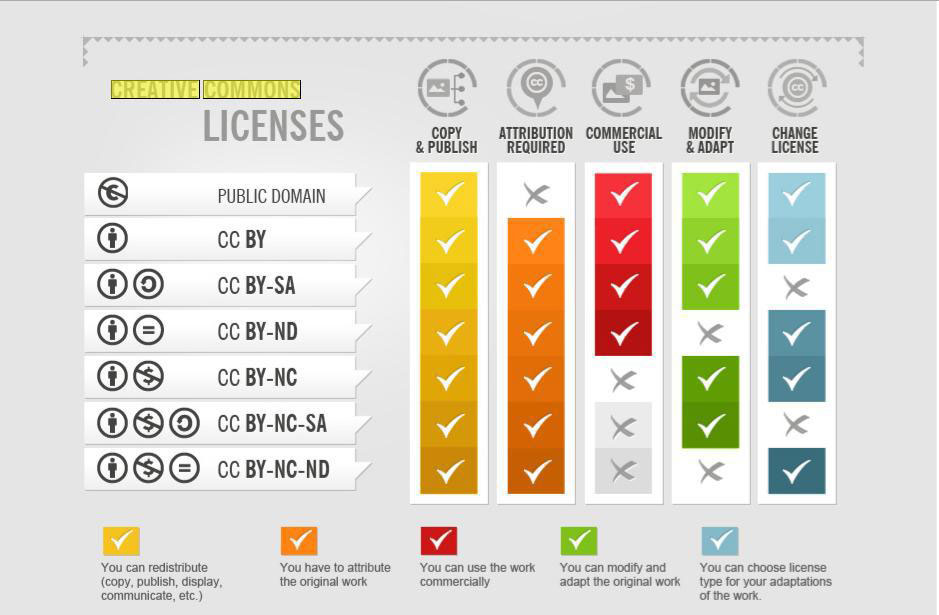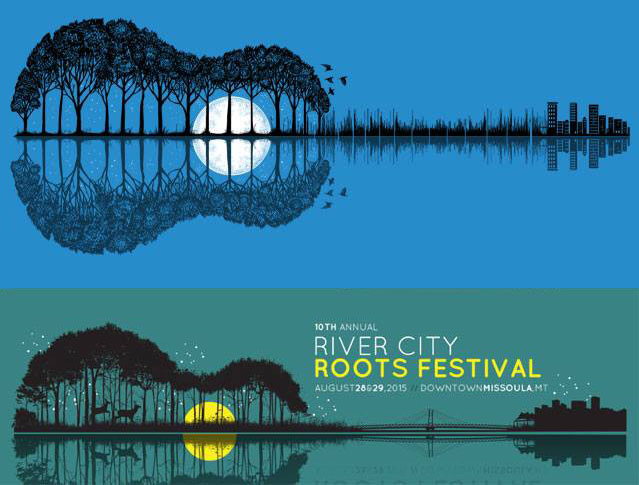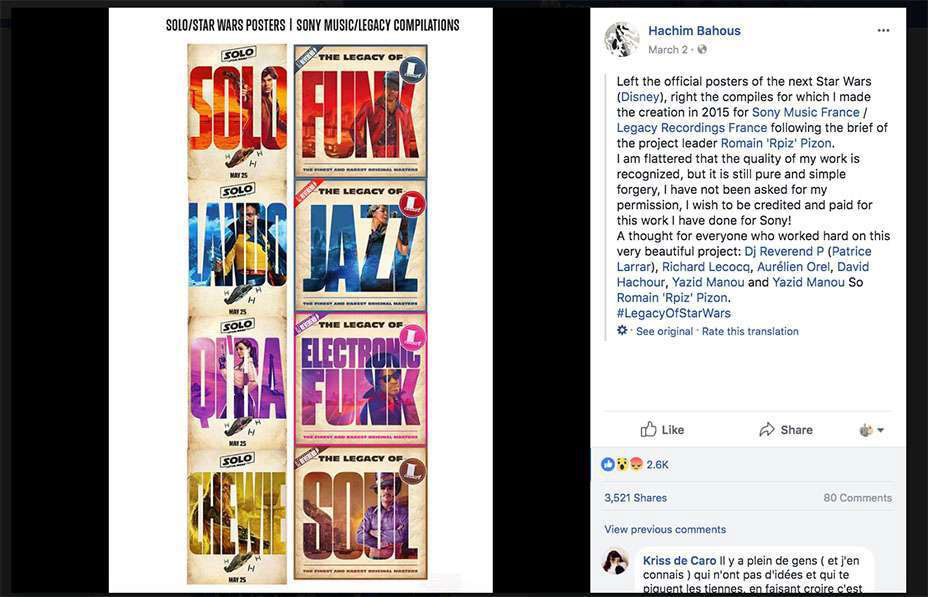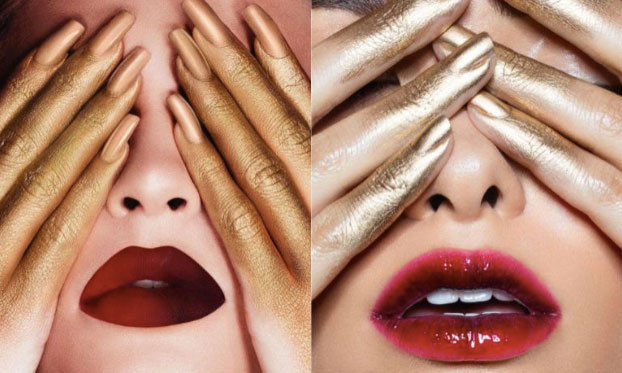
Digital content is being created at rates beyond our comprehension, meaning there is a vast sea of information out there that is available to virtually anyone. It is always difficult for early digital artists to resist the urge of grabbing a picture from here, sourcing a movie from there, inserting a hit song, etc. all without realizing the complex issue of licensing and legal usage. There are numerous tools available to artists to protect, share or lend the use, re-creation, or modification of our original works. In this section, we will explore the definitions, differences, typical applications, and the process to obtain these ownership protections.
Copyright © : Giving the publisher or creator of a specific work the right to publish or generate copies of this work, and keep others from fraudulently infringing upon recreations or publications of said work without approval.
Copyright is the official legal right to reproduce, publish, sell, or distribute an originator’s work established here in the states in 1790, under the Copyright Act. In the US, an artist is granted copyright upon creation of work – this is the important thing to understand here. As soon as work has been created, it is protected. If you just made a design, it belongs to you. Taking the extra steps to register your copyright ensures you stronger footing in legal protections but also gives you the ability to license or determine how to share or reproduce the work. Copyright can be sold or transferred to an assignee, and there are numerous types of licenses that can grant permission to use a copyrighted work for different purposes. Registering a copyright gives artists the ability to enforce copyright, or legally pursue those who might attempt to unlawfully replicate or use your work. All official copyright registration in the US is performed by the US Copyright Office, a division of the Library of Congress.
The process to register a copyright includes submitting an application and a copy of the original work. I’ll ask that you review these FAQ from the Copyright Office to become familiar with the process: https://www.copyright.gov/help/faq/faq-register.html
Work for Hire: In most cases, artists are considered originators of their own work and hold copyright to it. However, Work for Hire is a clause in copyright law that stipulates if the artist is an employee of a company paying you to create work, your employer is considered the originator of your work and is the rightful copyright holder. If work is being created for a client, your contract should stipulate who will own copyright of work purchased.
Let me expand upon this a little, as it’s the most common inquiry we face here in Media Arts. So many students want to know what happens to their work when they create something for somebody else. Usually they think that since they made it, it’s theirs. Most often that is wrong, as money has been exchanged. An example: The Missoula Food Bank asks you to create an awesome new truck-wrap design for their food rescue fleet. You agree to do the work, settle on a price and get busy designing. Once the work has been polished and finished, and passed on to the printer for output, it’s still your property. As soon as you accept a check for services however, that property is now in the hands of the Missoula Food Bank. At this point, they can file to register it and protect it or do whatever – even alter and change it (the thing that ticks us designers off the most, for sure.) There is no contract needed to determine these results – it’s just the way it goes. Not to say that you couldn’t draw up a contract in advance that the purchaser must agree that the paid work can belong to you upon delivery – that is a different legal matter, and it doesn’t happen too often.
Usually the most important outcome from doing some work for a client is retaining the right to display that product in artist portfolios, websites, etc. And usually the paying client is totally cool with this. However we have seen some contracts that when signed by the artist, eliminate the ability to do this – so be careful to read through any legalese and make sure to have these open conversations in order to clarify the expectations of both parties.
Fair Use: Fair use in another clause that allows certain uses of work. Noncommercial and educational uses are often considered under Fair Use. Fair Use often protects parody work, as is transformative work. According to the Library of Congress, transformative copyrighted work that has been “transformed in the creation of new information, new aesthetics, new insights and understanding” can be considered fair use.
Here’s an interesting one that surprises most students. While you are a student enrolled at the university, the work created, including still images, movies, sonic design, etc. are property of the university, not the student. There are several reasons for this, and it’s not really a bad thing. Most work that creative students generate stem from a class assignment that is usually the concept or brainchild of a professor or instructor, who has sculpted the requirements, guidelines, parameters, etc. And in most cases, the projects were created using university equipment and resources – computers, software paid for by the school, cameras, audio equipment, lights, and so on. That should not be of too much a surprise. The other factor is that the program or school has the right to use these works for broadcast of achievements, recruitment, and archiving. It’s pretty common for a student to make up a fake production name, animated logo and slap a © on things, but that is all pretty much moot – until graduation and new work is produced outside the academic environment.

Examples of fair use can be found all over. Please take a moment to visit and read this Digital Millennium Copyright Act Policy for graphic artists https://www.teefury.com/dmca/ created by TeeFury, an online t-shirt company.
This film (25 min) by Filmmaker IQ is a wonderful resource for shedding insight as to how the idea of copyright got its start, and how it came to be such a powerhouse today.
Creative Commons is a type of copyright license that allows degrees of free and open distribution, modification, and reuse of a piece of work. A CC licence ensures that all work that builds upon the original must either remain in Creative Commons use, or must pursue additional licensing for individual copyright. Creative Commons licences can also restrict commercial use, maintain attribution for the original artists, and other protections.
The following graphic illustrates some of the key attributes and rules to works under creative commons.

Copyleft : Copyleft is a status granted by the originator allowing use of work for modification, distribution, and other uses. Copyleft is often used in the programming world, and is similar to open source software. Any future versions of copyleft material is bound by its original copyleft status (may not be copyrighted without further process).
Public Domain (PDM): Public domain is work that is free; the owner of public domain work is considered to be the general public – all of us together. Some work is created as public domain – this is known as a “dedication”. Work that has never been copyrighted or is not protected under copyright law is also considered Public Domain, as is work for which copyright has expired. As of 1998, a copyright will expire 70 years after the author’s death.
Though I do not expect you to become familiar with the letter of our copyrighting laws, exploring the Copyright Office website will offer more insight to the scope of this complex federal office, which employs 400 individuals and processed more than 400,000 copyrights last year alone.
Here is a quick explanation of Creative Commons by a calm Australian:
The Copyright Office on Visual Arts:
The visual arts category consists of pictorial, graphic, or sculptural works, including two- and three-dimensional works of fine, graphic, and applied art. Examples of such works include photographs; digital design; logos; movies; original prints; painting; original music; cartographic works; technical and mechanical drawings; and architectural drawings, plans, blueprints, or diagrams. Most things we create in Media Arts or Art is under this umbrella.
Copyright protects an author’s specific expression in literary, artistic, or musical form. Copyright protection does not extend to any idea, system, method, device, name, or title.
The Copyright office describes the options for applying to register works of the visual arts. The deposit requirements will vary, depending on the nature of the work and whether it has been published prior to registration. For more information, see Circular 40a, Deposit Requirements for Registration of Claims to Copyright in Visual Arts Material. If the visual art is published, the proper deposit is generally two complete copies. Identifying material can be deposited in some cases.
If the visual art is unpublished, one complete copy is generally required. This copy must represent the entire copyrightable content of the work for which registration is sought.
Identifying material deposited to represent the visual art will usually consist of photographs, photostats, slides, drawings, or other two-dimensional representations of the work. The identifying material should include as many pieces as necessary to show the entire copyrightable content of the work, including any copyright notice on the work. All pieces of identifying material other than transparencies must be no less than 3″ x 3″ in size, and not more than 9″ x 12″, but preferably 8″ x 10″. At least one piece of identifying material must, on its front, back, or mount, indicate the title of the work and an exact measurement of one or more dimensions of the work.
For more information, see Circular 40, Copyright Registration for Works of the Visual Arts.
CharliMariTV has produced this short video with the intent of helping artists understand a little more about staying legal and safe with our work.
Please watch this short TED talk by Margaret Gould Stewart about how youtube.com handles copyright within their network.
 When another artist’s work is used without permission, it’s called Copyright Infringement. Other words that are used to describe this: plagiarism and theft. It is serious business, and ethically and lawfully, we are bound to respect the original creations of others.
When another artist’s work is used without permission, it’s called Copyright Infringement. Other words that are used to describe this: plagiarism and theft. It is serious business, and ethically and lawfully, we are bound to respect the original creations of others.
While in school – likely in many of my classes – you may have used pieces of copyrighted materials in your assignments. This falls under the Fair Use clause as educational purpose, and ends as soon as that work is used for anything other than to get a stellar grade.
Here are a few currents examples: (click the images to get the articles…)
The similarities in these examples are hard to miss. In the second example, it is clear that the originator’s work had been used without consent; the suit was settled out of court.
In the first example, though, it is not so clear. With an already difficult start to their promotional push, Lucasfilm and Disney have found themselves in a bit of a pickle with the poster release for the upcoming film, Solo: A Star Wars (images on the left.) The designer for the artwork of these posters obviously did some deep research and found some design that was a little more than just inspiration – it’s a flat-out steal. The posters on the right (the “originals”) were designed for a Sony Music France project by a team of artists in France. It was not clear to the journalist whether Sony or the originator owns the copyright for the work. As we’ve learned, this could be a Work for Hire situation, where the copyright holder could be a different entity than the individual artist. In this case, there could be an arrangement between the copyright holder (Sony or the design firm), and Disney for the Solo posters. If not, total infringement.
Want an example a little closer to home? The River City Roots Festival happens every year and brings in so much excellent world-class musical acts, arts and crafts, food and drink. It’s a fun event to experience and a great asset to Missoula and its downtown. Each year they have a new design for their advertising campaign – ads, posters, shirts… But a few years ago I had to take a second look when the first ad came out in the local paper. I knew that I had seen the design a year or two earlier, because my first impression was, “Wow – that’s smart!” So I had the image locked in my memory. So when I saw what the “creative” (hah) team at the big paper in town had come up with for the year’s festival, I was shocked. Upon some investigative work, I found that the original work was created by Malo Tocquer in Brazil. I gave my best effort to raise this issue with the paper and the festival organizers, but no one seemed to care an ounce. Then I attempted to contact the artists, but that proved difficult and I never heard anything back. The design even made it’s way into the following year’s design, with a few tweaks, after uncovering the blatant infringement. I call foul, but if no one wants to do anything about it, then what good is it to waste energy. Here are the two images – make the call for yourself.

Severe penalties are written into copyright law to protect creators and discourage theft. In a criminal case for a first-time conviction of copyright infringement, the offender can be fined up to $250,000 and up to 5 years in prison. Repeat offenders can receive up to 10 years in prison with additional fines of up to $250,000. Most criminal infringement cases are coupled with civil cases, pursuing a dollar figure for damages. Again, be sure that you pay close attention to the rights of other artists as you pursue your careers in the visual arts field.
DRM, or Digital Rights Management is a very important protection measure for most things digital. This first big de with DRM involved digital music and control of what users could do with it once they either purchased a CD, or downloaded a song from iTunes. It caused all sort of lawsuits and trouble for parties on both sides. DRM even applies itself to gaming. Watch this short video on rights management within this industry.


